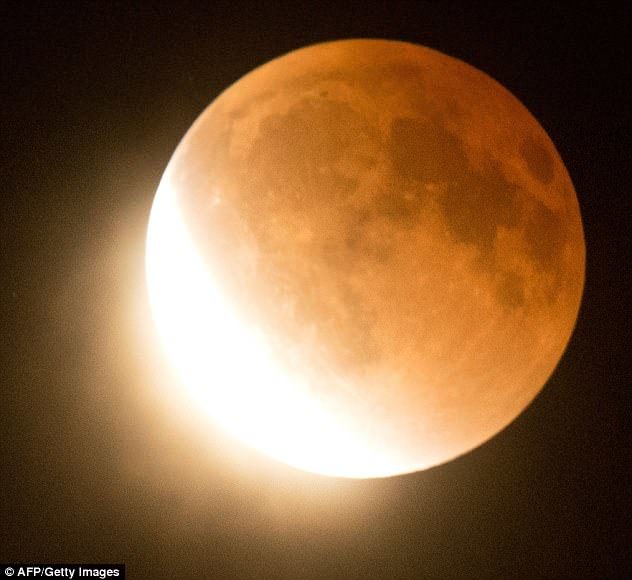
© AFP/Getty ImagesStargazers can enjoy the longest lunar eclipse this century next month. The event will be visible to most people in the Eastern hemisphere and will last for an incredible 103 minutes (file photo)
Skygazers can enjoy the longest lunar eclipse of the 21st century next month.
The lunar event, which takes place on July 27, will be visible to most people living in the Eastern hemisphere and will last for 103 minutes - four minutes short of the longest possible duration an eclipse could last.
Blood moon in Australia: July 28th
According to EarthSky, here's when you'll be able to enjoy the show in Australia on July 28th (times in AEST):
3.14am: Eclipse begins
5.30am: The moon can be seen at is reddest
6.21am: Maximum eclipse
7.13am: Total eclipse ends
The rare celestial event is the result of several astronomical events aligning, which will prolong the phenomenon.
During the eclipse, the moon will pass through Earth's darkest shadow, known as umbra, causing it to take on a red sheen, giving rise to the 'blood moon' name.
No equipment is needed to view the event, with the naked eye more than enough to watch the century's most impressive eclipse.
Unlike a solar eclipse, where the moon crosses the path of the sun, it is perfectly safe to look directly at the lunar eclipse.
People hoping to enjoy the 'blood moon' need only to hope for clear skies.





Comment: Western sanctions: Russia ready to be cut off from internet with its own web